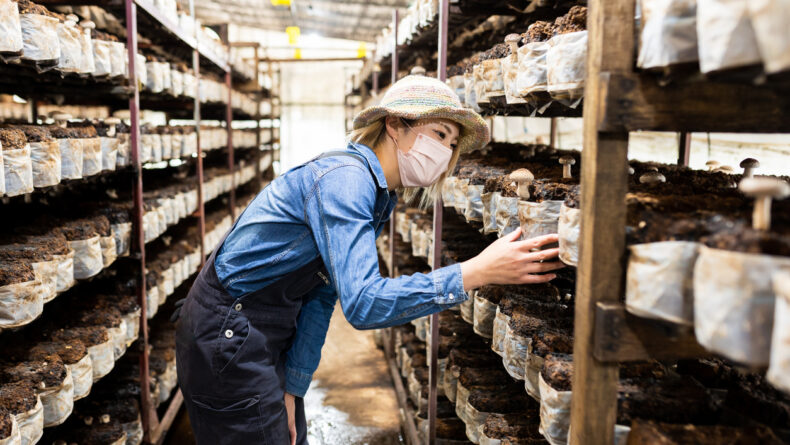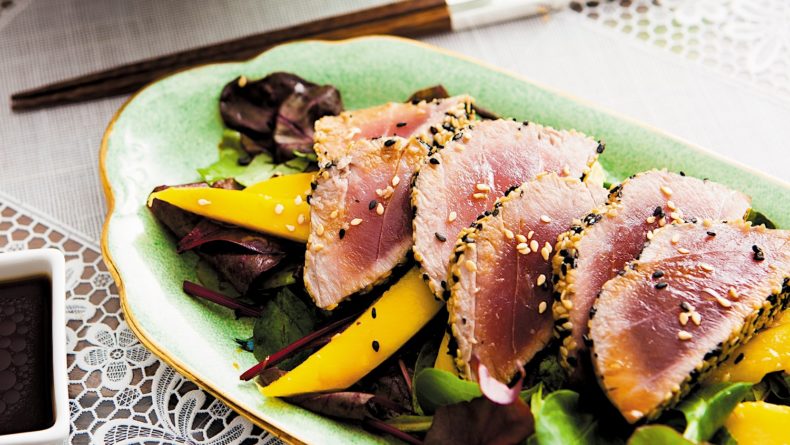Kaki: The Miracle Japanese Persimmon
Japan's Fall Fruit Favorite
Is it a baby pumpkin? Is it an orange tomato? No, it’s a persimmon! And it’s got more vitamin C than lemons!
One of the most loved autumn Japanese fruits, kaki (柿), or persimmons, (though somewhat different from what we tend to think of persimmons in the west), are officially in season. And these orange miracles deserve a special note because they are:
- Extremely rich in dietary fiber
- Rich in vitamin A, vitamin C (more than lemon!) and many valuable B-complex vitamins such as folic acid, pyridoxine (vitamin B-6) and thiamin
- #freakindelicious
If you’re unaccustomed to these magical smooth-skinned orbs, here’s a lowdown.
The miracle orange fruit
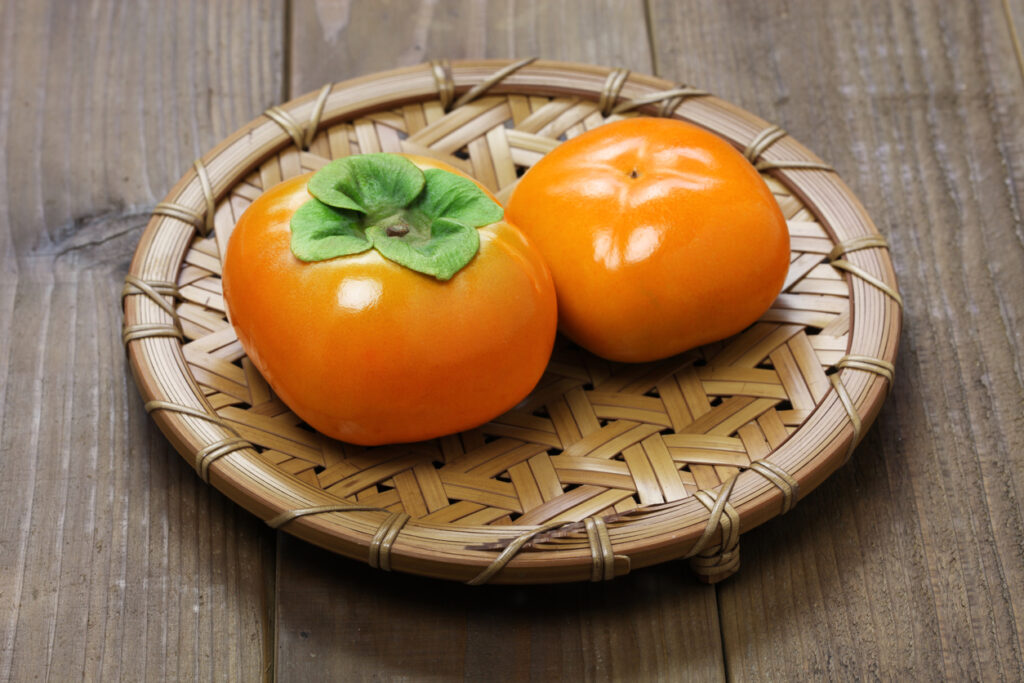 © Photo by iStock: bonchan
© Photo by iStock: bonchanI fell in love with kaki during my precious time in the Japanese countryside. Every October, these magical golden orbs came into my life, freshly picked from my colleague’s yard (with permission, I swear!) Although uniquely sweet, persimmons come in at least a thousand different varieties, we can broadly classify them into two major groups: the non-astringent kind and the astringent kind (astringent meaning the uninvitingly tangy taste that comes from accidentally chewing banana skin, for example).
The non-astringent kind, fuyuu-gaki, are round, fat and firm, and look like a mini pumpkin or an orange tomato. In Japan, fuyuu are typically eaten as a dessert, peeled with a knife, seeded, then cut into wedges similar as you would an apple. Because of their crispness, fuyuu go well with accompanying cured meats and cheese boards, tossed into fresh salads, added to savory stews, or my favorite: sliced thin and eaten with goat’s cheese and honey on toast!
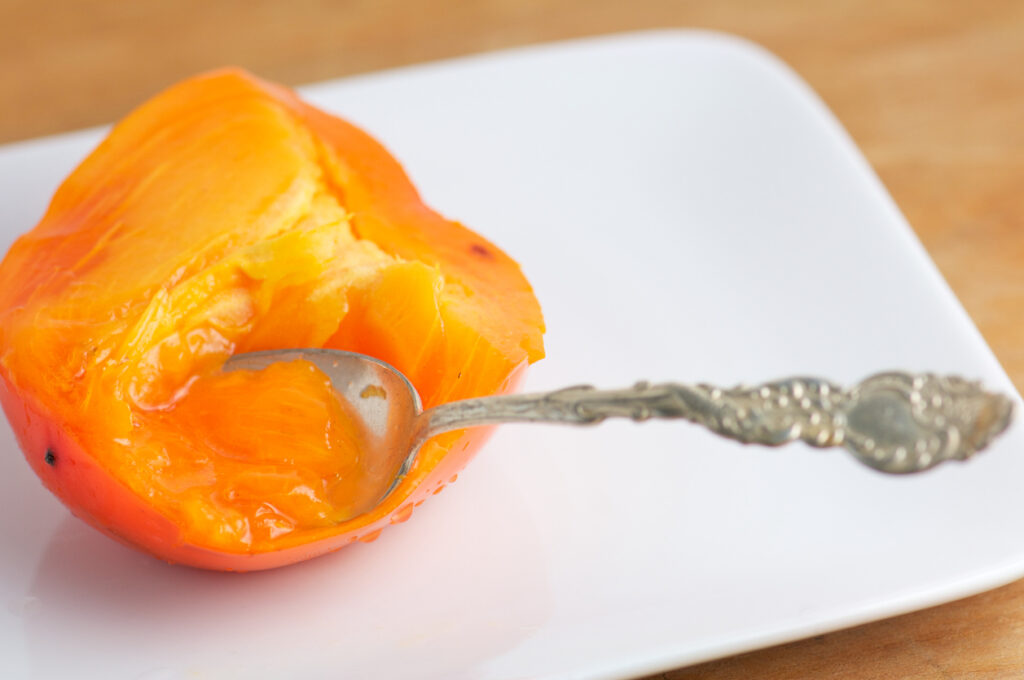 © Photo by iStock: PoppyB
© Photo by iStock: PoppyBThe astringent, hachiya-gaki, are slightly elongated and acorn-shaped. Unlike fuyuu, because of their high astringency, hachiya must be completely ripened (soft and squishy) so that their astringency is naturally removed before they can be eaten. Because of their jam-like consistency, hachiya are perfect as a topping for yogurt, granola, and/or oatmeal, added into cakes and puddings or my favorite: scooped fresh with a spoon.
Pampered hoshigaki
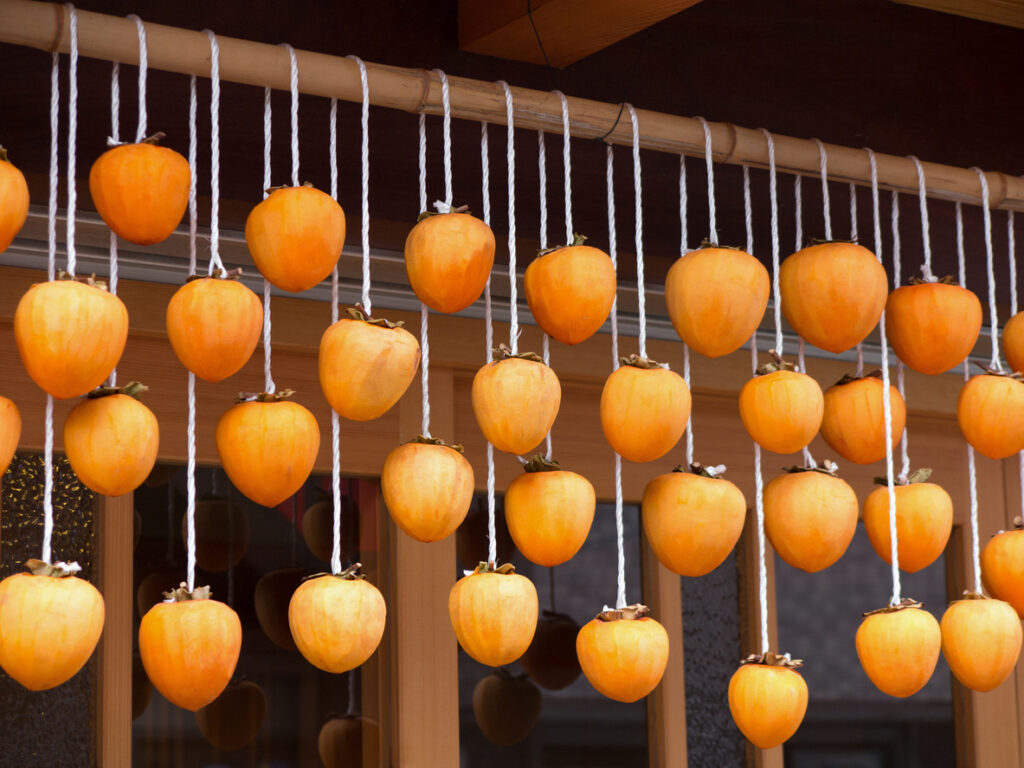 © Photo by iStock: y-studio
© Photo by iStock: y-studioThe third kind of kaki you shall encounter in the coming months but only for a limited time is hoshigaki (dried persimmon). Made from the best-reserved hachiya persimmons, hoshigaki are an incredibly special dried fruit, enjoying a much more pampered life than me or you. Peeled hachiya are hung from strings and left to dry in a sunny spot. Once they have formed a new skin, these persimmons are treated to a daily gentle massage for at least one month! (Perhaps this explains their extortionate price).
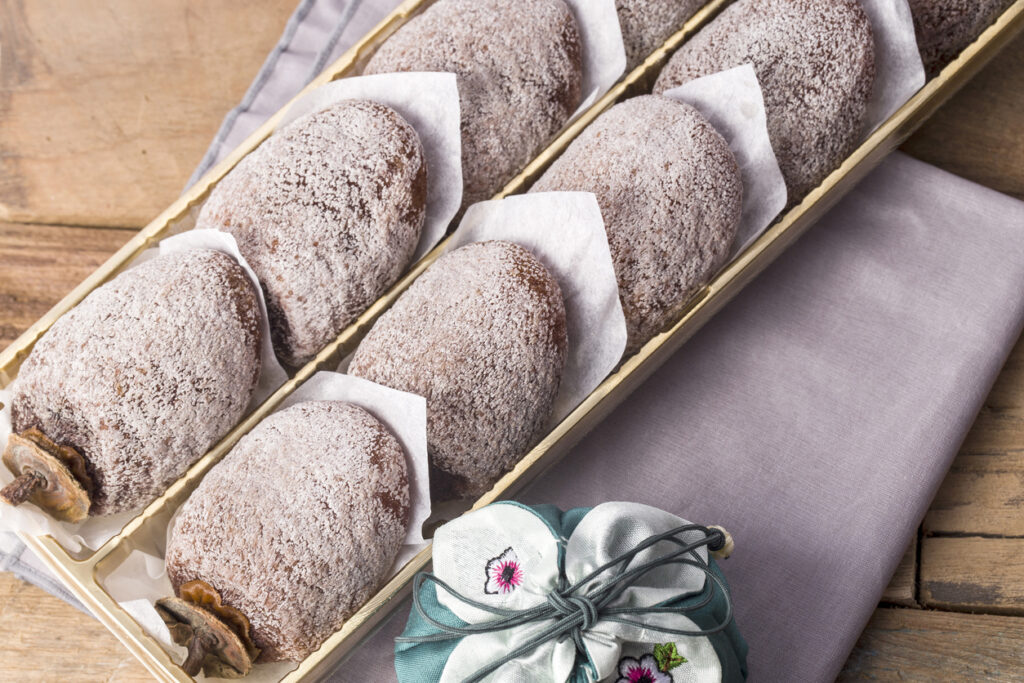 © Photo by iStock: bong hyunjung
© Photo by iStock: bong hyunjungThe result of the diligent process is a matured, deflated, yet moist and chewy burnt orange/brown fruit with a white powdered glaze and a sweet, almost cinnamon-like flavor with a warm floral scent. Take my word for it, delicate hoshigaki are unlike any dried fruit you’ve ever tasted. And, as far as I know, they’re impossible to find for non-Japan dwellers.
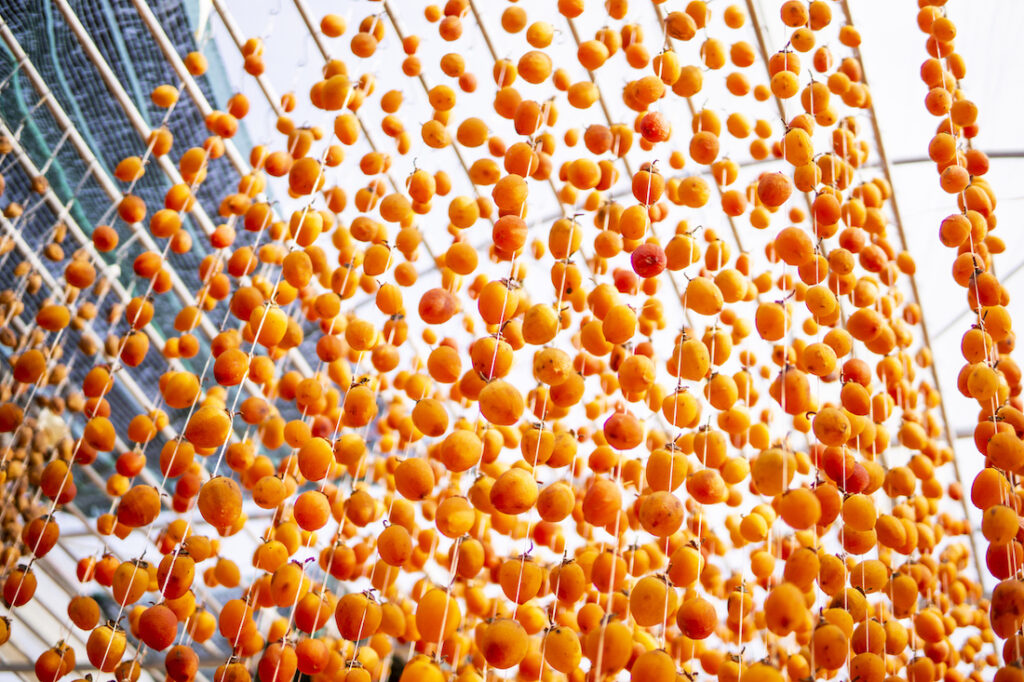 © Photo by iStock: NgKhanhVuKhoa
© Photo by iStock: NgKhanhVuKhoaFurther, if you manage to leave the hustle and bustle of Tokyo for the serene Japanese countryside, be sure to keep an eye out for the incredibly interesting scenes of a hundred hanging hachiya.
Recipe: A simple customizable kaki salad
Ingredients
Salad:
- 2 firm fuyuu persimmons, peeled, seeded and finely sliced
- 1 cup halved grapes or 1/2 cup dried fruit of choice
- 3 large handfuls of salad greens of choice (mesclun, rocket, etc.),
- 1/2 cup herb of choice (basil, mint, coriander), torn
- 1/2 cup nuts of choice (almonds, cashews, macadamia, hazelnuts, etc.), toasted
- 3/4 cup shaved parmesan cheese or cooked quinoa
- Freshly cracked black pepper
Dressing:
- 3-4 tablespoons extra virgin olive oil
- 1 1/2 tablespoons apple cider vinegar
- 1/4 cup freshly squeezed orange juice
- 1 teaspoon runny honey or maple syrup
- A good pinch of salt
Instructions
- Shake all dressing ingredients together in a jar until smooth and set aside.
- Combine persimmon, grapes, greens, herbs, nuts, parmesan and half of the dressing in a salad bowl and toss lightly.
- Just before serving, top the salad with a generous grinding of black pepper and a little more dressing.
- Place it in a colorful bowl or plate and eat it before anyone else does.
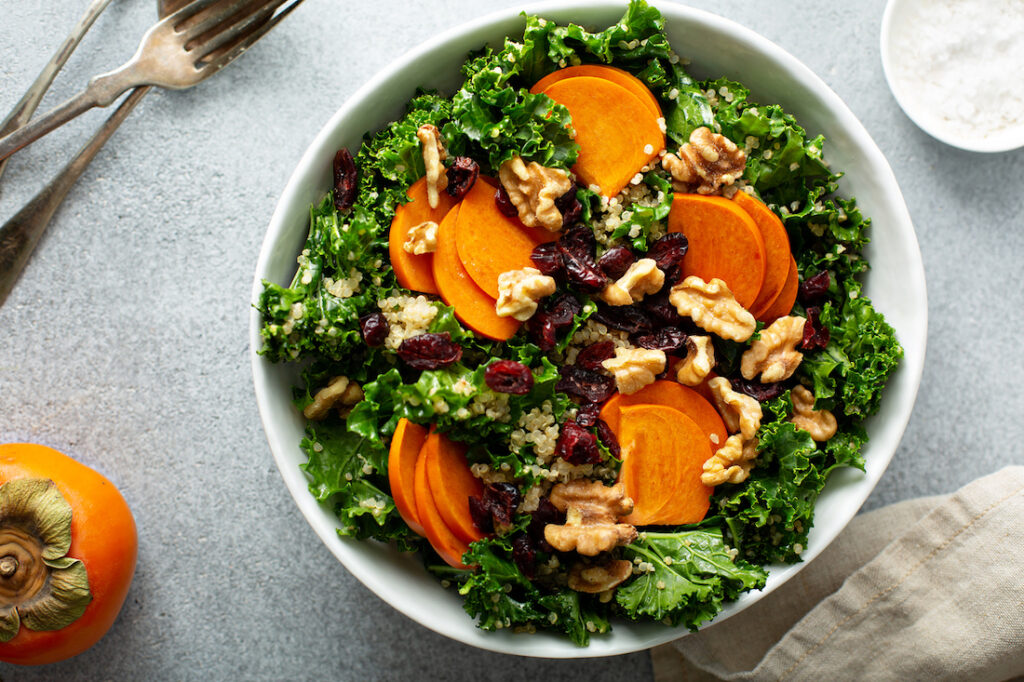 © Photo by iStock: VeselovaElena
© Photo by iStock: VeselovaElenaBon appetit!












